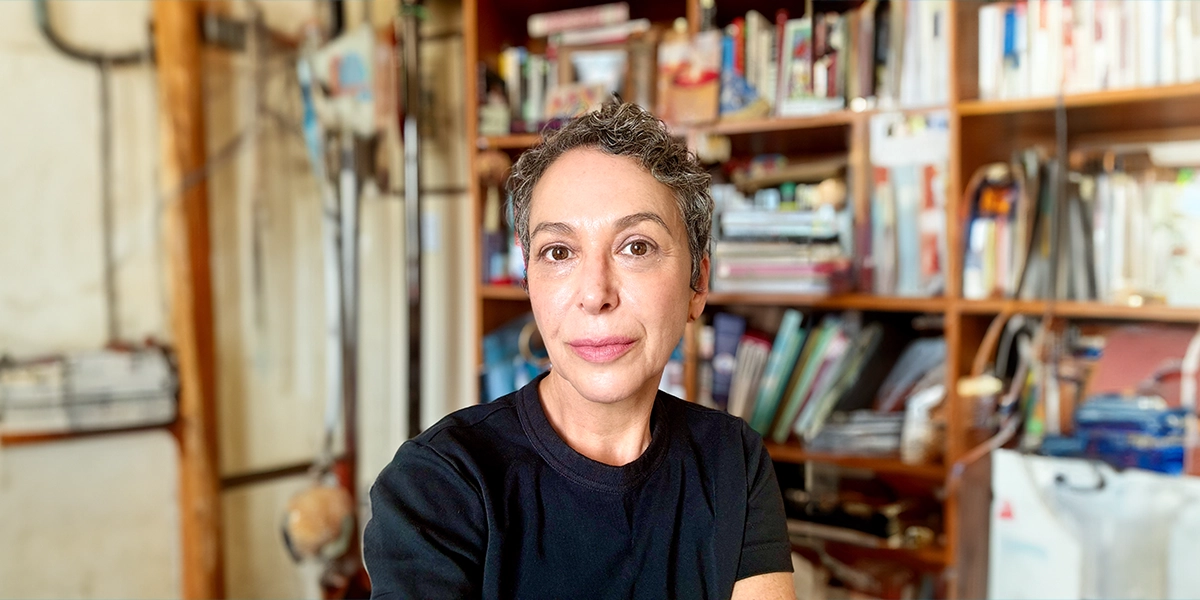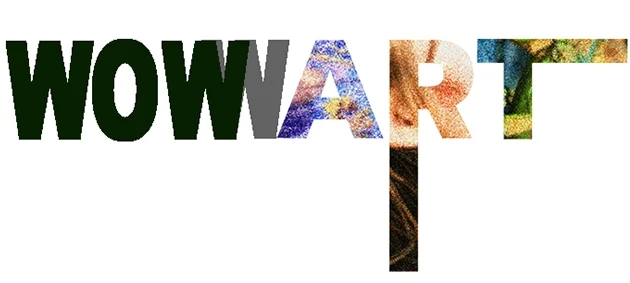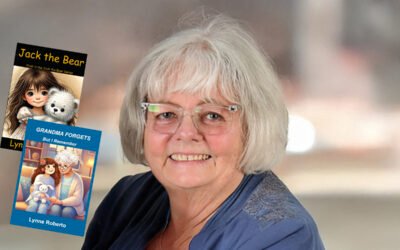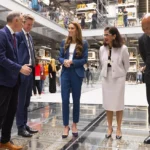Dianna Frid Weaves Time Language And Materials Into Transformative Works

Photo: Dianna Frid in her creative space, surrounded by shelves of books and inspirations, embodying the intersection of intellect, artistry, and material exploration.
Exploring the Intersection of Craft and Fine Art
Dianna Frid discusses her artistic practice, highlighting sewing, materials, and bilingualism to explore themes of language, deep time, feminine legacies, and the powerful interplay between craft and fine art.
Dianna Frid’s work invites us into an extraordinary world where language, materials, and time converge with depth and elegance. Through her artist’s books and mixed-media creations, Frid explores the tactile essence of communication, using sewing, gold, graphite, and even rocks in ways that transcend traditional notions of craft and art. Her practice challenges distinctions, embraces cultural histories, and speaks directly to our shared humanity.
Born in the vibrant textures of Mexico City and shaped by her journey to Canada and beyond, Frid has cultivated a profound understanding of how materials hold stories and meanings. Her art blends analytical thought with a palpable sensuality, uncovering the rhythms of language and the layers of deep time that shape our existence. With each stitch or inscription, she transforms the ephemeral into the enduring, reminding us of the beauty in process, material, and the echoes of forgotten histories.
In this insightful interview, Dianna Frid shares her journey—from the rhythmic sounds of her grandfather’s tailor workshop to her own exploration of embroidery as a way to intertwine legibility, memory, and narrative. Frid offers a compelling perspective on the interplay between craft and fine art, the feminist legacies she draws from, and the enduring power of materials to inspire humility, wonder, and connection. Her generous and thoughtful reflections will inspire both artists and admirers alike.
Dianna Frid masterfully transforms materials and ideas into profound, tactile expressions of language, history, and time, redefining boundaries of art.
Can you describe how your upbringing in Mexico and your early exposure to textiles influenced your artistic practice and the themes you explore in your work?
My maternal grandfather immigrated to Mexico City from Rumania just before World War II. As a refugee in Mexico, he became an established women’s tailor. His workshop was packed with treadle sewing machines, and his feet, and those of his staff, set the mechanism of the Singers in motion. I remember the rhythmic sounds of the sewing contraptions and the bodies gently swaying. These sways and sounds gave me a glimpse of what rhythmic processes could be, but nobody expected me to learn how to sew, and, as a result, I was not taught. Nevertheless, I gravitated to both texts and textiles on my own, particularly when I realized that all cultures have used textiles as codes. This is a lived reality in the traditional garments that people occasionally wear throughout the world. But I first noticed this in Mexico, where I was born.
“Sewing text is, above all, a way to spend time with words, slowly.” – Dianna Frid
You often use embroidery as a central medium. How does this choice impact the way you convey the relationships between writing, drawing, and legibility in your pieces?
Legibility and transcription inform how I work with embroidery thread— a prevalent material in my work. Spanish is my mother tongue, and English is my “stepmother language.” Bilingualism puts me in a constant inner state of translation that influences what I choose to transcribe through sewing. Sewing text is, above all a way to spend time with words, slowly. The slowness in writing also becomes slowness in reading. This puts stress on text not just as a utilitarian method to preserve utterances, ideas and more, but as a substance that emerges and retreats, that is legible and then illegible—but not absent.
Your work seems to challenge the traditional distinctions between craft and fine art. How do you navigate the tensions and synergies between these two disciplines in your practice?
I like that you use the term synergies, and I think naming it as synergy is a way to open the conversation about affinities and not polarities. What troubles me about the typical hierarchical distinctions is that they tend to see art as communicative of new ideas and disruptive of traditions. In opposition, craft is then erroneously perceived as obedient and static. As of late, this has mercifully become of a tired notion. Sometimes establishing distinctions can be helpful to identify that a particular technique in a given culture is being passed on from one generation to another. But I taught myself how to use embroidery, and I did this because I wanted, above all, to make something other than painting. Like most people of my generation and geographical location (North America), taking art classes at a Liberal Arts university or college meant learning how to paint. And I did not want to do that, at least not all the time. So, I took refuge in sewing and found a home in art.
In what ways do you believe your work engages with feminist lineages of craft, and how do you see that relationship manifesting in your art?
This may tie into your question of traditional distinctions. I am an artist, and I am also a feminist. But I don’t think in terms of being a “feminist artist” or engaged in “feminist craft”. Perhaps it is more accurate to say “feminine” lineages and acknowledge that one can be any gender and tap into these. I often think of how, historically, many girls were taught how to read and write by making embroidered samplers of alphabets and piecing words together through sewing. At times this could have been another way to marginalize the feminine because sewing was an imposition, not a choice. But what would happen if we were to reintroduce this as an empowering choice for those who want to try another form of learning text?
How do you approach the integration of sensuality and analytical thought in your work, and what significance does this duality hold for your creative expression?
There are many questions and material inclinations that drive me to make work. Yet, a good work of art, in my view, exceeds language and even context and can be felt and experienced visually—which is to say, sensually. When I look at something that moves me, most of the time I experience the resonance through the puzzle that work’s facture: it is more than the sum of its constituent parts and a vessel for the concepts it carries. We could also call this resonance a “seduction” but a seduction doesn’t necessarily mean that one shuts down critically when one is seduced by the sensual presence of a thing. There is a form of surrender and belief that comes into play with the encounter. It took me many years to be able to articulate with words what my work may be “about.” And my ability to analyze and put this into words—for better or worse, elusively or reductively—came after a devoted process of assembling things in an attentive yet uncharted way. Once I figure out how to make something, I generally repeat the processes, because the discovery that happens through process is what leads to a series of works. And this is where analysis comes in, I think.
How do you see the role of materials in your work, particularly in terms of their historical and cultural significance, and how do they contribute to the overall narrative you aim to convey?
Language is a material. Words, letters, the curves and lines that constitute them: these are all substances. Lately I have been working with gold leaf and rocks. Gold in its purest form is nearly as old as the universe. Many rocks are thousands if not millions of years. Using these materials, alongside the slow work of sewing, points to the fact that sewing is not really that slow after all. I am not sure there is an overall narrative in my work, but these materials offer an opportunity to think about deep time and our small place in the universe. Perhaps this might contribute a measure of humility and another measure of perspective. Both are indispensable to understand that the human is only a small part of it all. And this is good.
EDITOR’S NOTE
Review (90 words):
Dianna Frid’s The river twice soft edges color retouched is a mesmerizing diptych blending metallic textures, poetic text, and organic motifs. The left panel’s turquoise and gold layers cradle fragmented verses about rivers and secrecy, punctuated by crimson hearts. Its counterpart shimmers in silver, echoing Heraclitus’ philosophy on impermanence with inscribed reflections on nature’s interconnectedness. Both pieces balance geometric precision with fluid abstraction, inviting contemplation of time, transformation, and materiality. The tactile interplay of thread, leaf, and language transcends craft, offering a meditative dialogue between ephemeral words and enduring forms. A profound synthesis of touch and thought.













